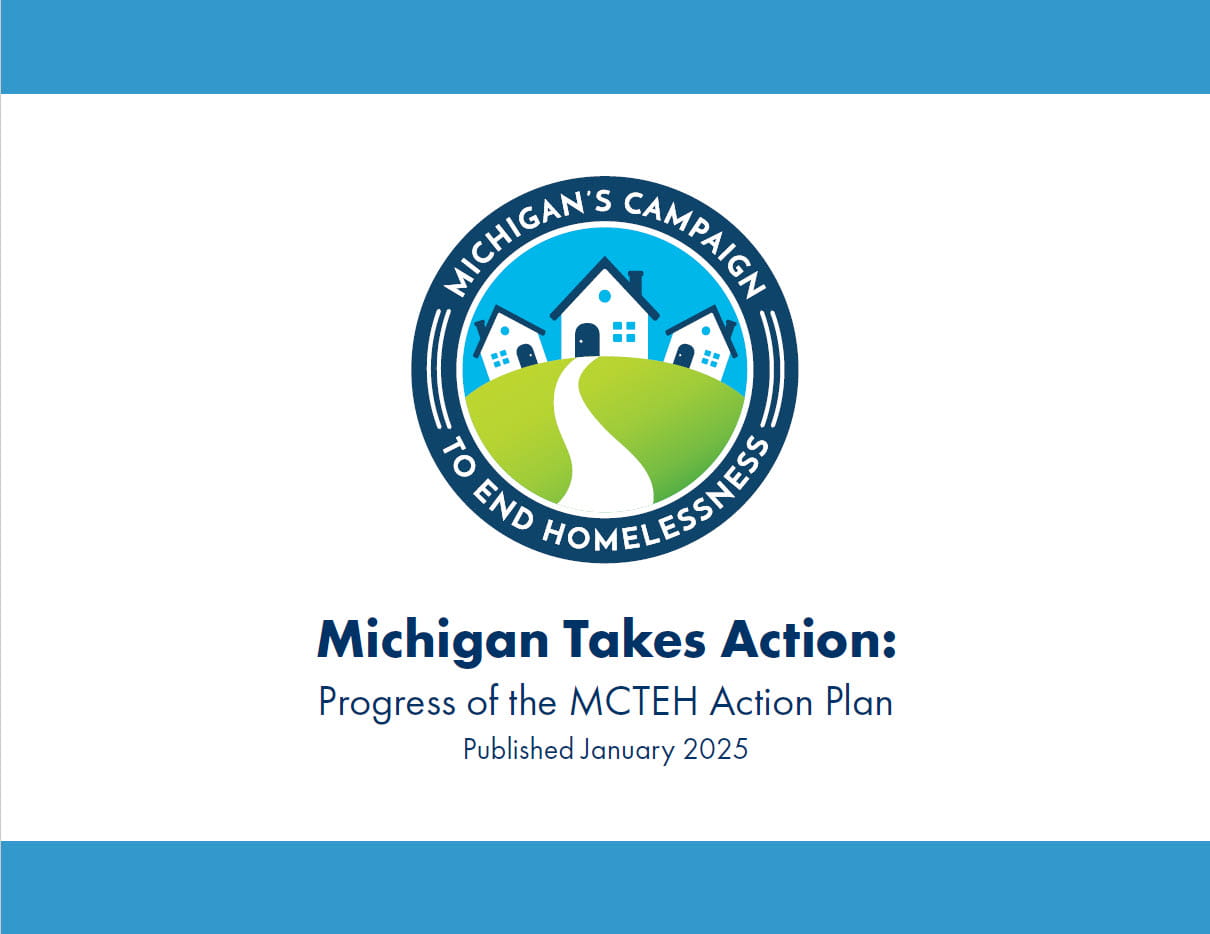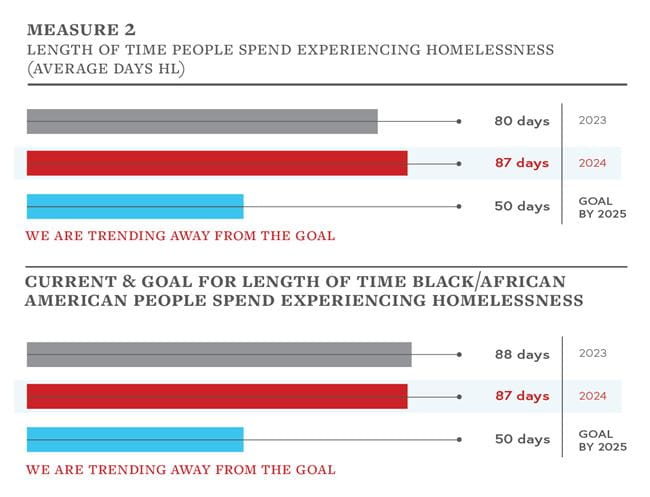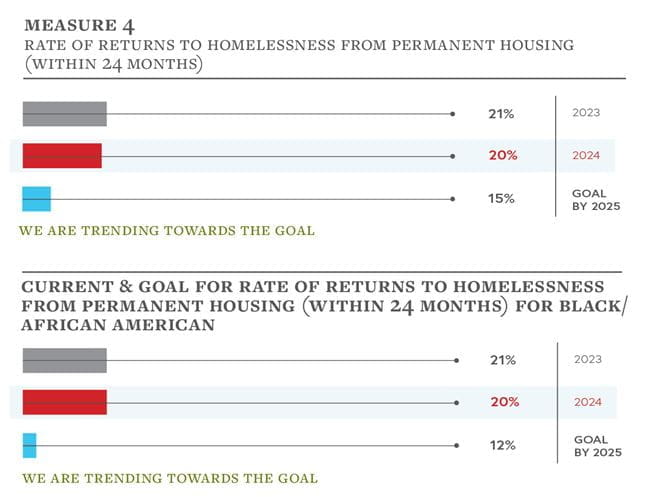The web Browser you are currently using is unsupported, and some features of this site may not work as intended. Please update to a modern browser such as Chrome, Firefox or Edge to experience all features Michigan.gov has to offer.
Action Plan
Michigan's Campaign to End Homelessness Action Plan 2023-2025
The first statewide action plan to end homelessness was written in 2006. What started as community-level action plans, aimed at increasing access to affordable housing and driving self-sufficiency, has evolved into a statewide infrastructure known as the Michigan Campaign to End Homelessness (MCTEH). In early 2015, former Michigan Governor Rick Snyder, appointed the Michigan Interagency Council on Homelessness (MICH) through Executive Order 2015-2. The council, chaired by state leadership, consists of representation from 13 state departments, non-profit agencies, and the general public who work together, using this plan as their guide, to prevent and end homelessness in Michigan.
The global COVID-19 pandemic had lasting public health and economic impacts on our state’s most vulnerable Michiganders. People experiencing homelessness are at increased risk of contracting COVID-19, and statewide data revealed that COVID-19 disproportionately impacted people of color and those with complex health needs. In response to the pandemic, Continuums of Care (CoCs) throughout Michigan strategically deployed resources, de-congregated living facilities, rapidly re-housed the most vulnerable people in their communities, and increased access to personal protective equipment.
Additionally, Michigan saw an extraordinary influx of funding from the federal government to prevent people from entering homelessness and to re-house people as quickly and safely as possible. While this funding, along with early statewide efforts, contributed to lower infection rates among people experiencing homelessness and helped maintain some stability across the state, there is significant work that must be done to heal from trauma and support housing recovery and stabilization across the state. As we emerge from the global pandemic, we carry with us lessons of resilience, flexibility, community, and recovery – lessons that have informed the update to this plan and will carry into implementation.
Ending homelessness in Michigan is possible. This update to the MCTEH Action Plan establishes the parameters for what it will take to work toward that goal over the next 3 years. Homelessness is a complex and dynamic issue, but one that can be solved through a willingness to engage in transformative conversations and to collaborate in ways that stretch us beyond our comfort zones. As we embark on implementation of this updated Action Plan, the MCTEH will continue to evolve by elevating the approaches that have driven reductions in homelessness in the state and digging deep into the issues that have prevented us from ending it altogether.
You Can See the Action Plan Here
The 6 Goals from the Action Plan include:
Goal 1: Increase amount of safe, accessible & affordable housing targeted to households experiencing homelessness.
Goal 2: Prevent homelessness whenever possible, targeting resources to households most at risk of becoming homeless.
Goal 3: Collaborate with local and statewide systems that are crucial to preventing and ending homelessness.
Goal 4: Improve equity within the homeless system and reduce racial disparities among households experiencing homelessness.
Goal 5: Authentically engage people with lived experience (PWLE) of homelessness, especially in the form of ongoing partnerships rather than time-limited, one-sided engagements.
Goal 6: Use data to measure progress and create accountability.
How are we doing?
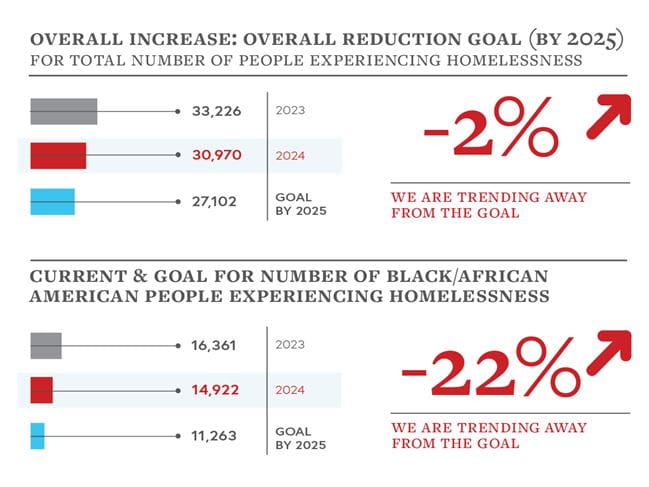 |
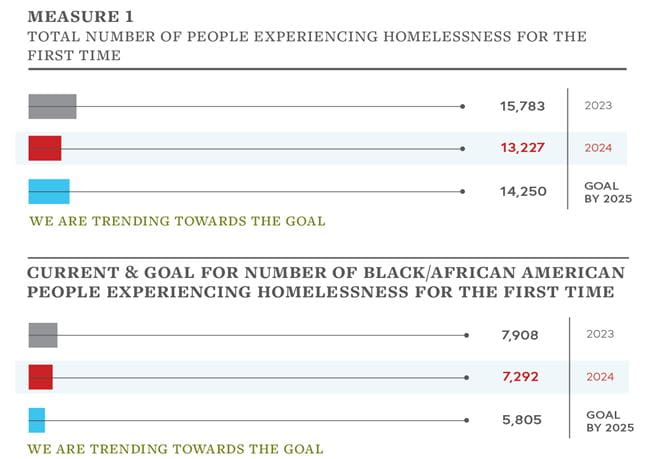 |
|
|
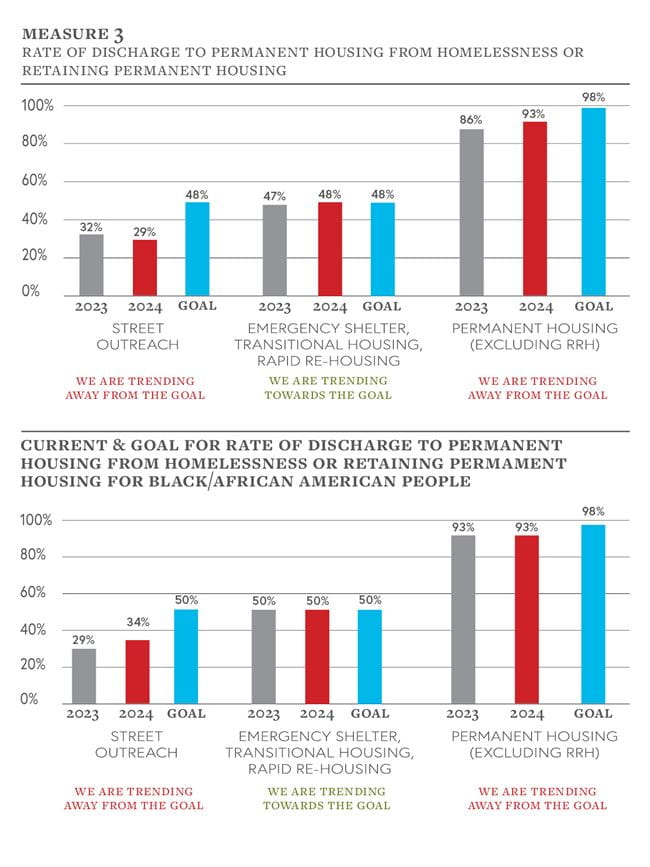 |
Progress Report
In January of 2025 Michigan's Campaign to End Homelessness published Michigan Takes Action: Progress on the MCTEH Action Plan. To download a copy of the Progress Report click on the image below.
